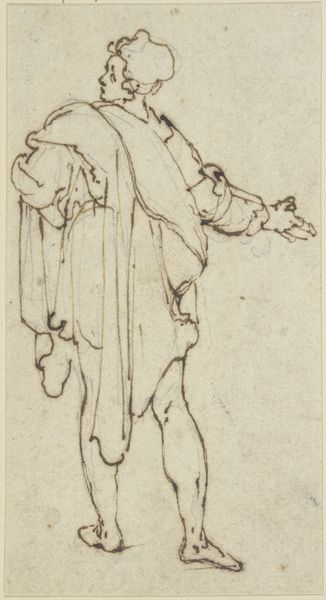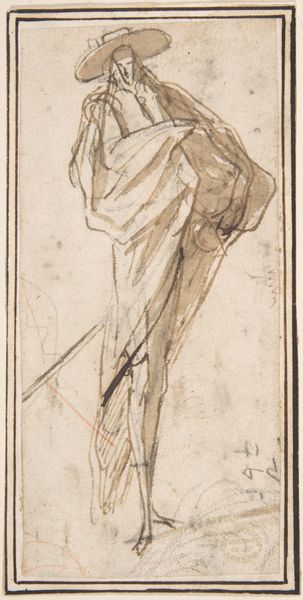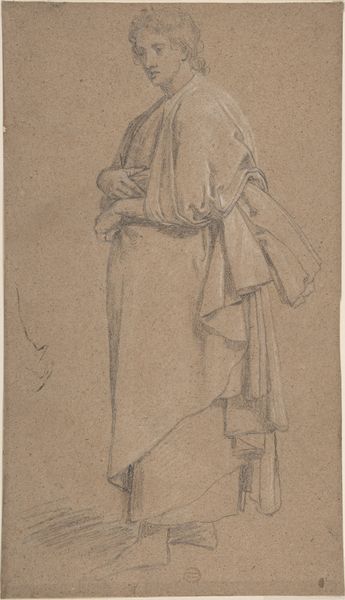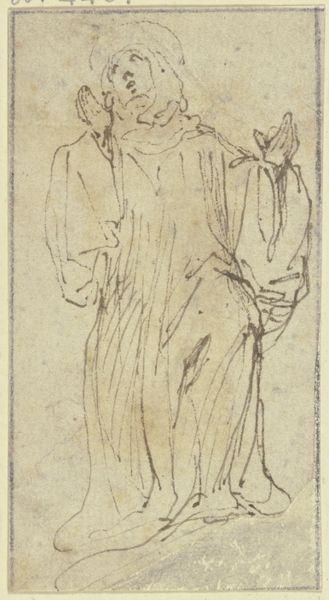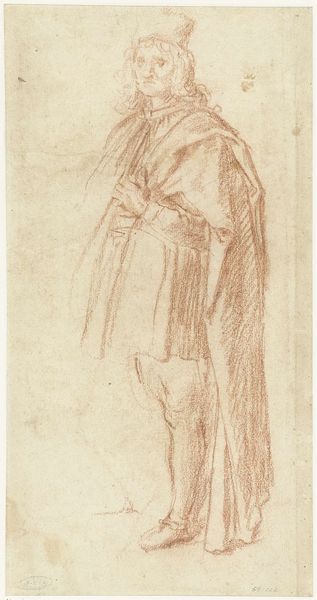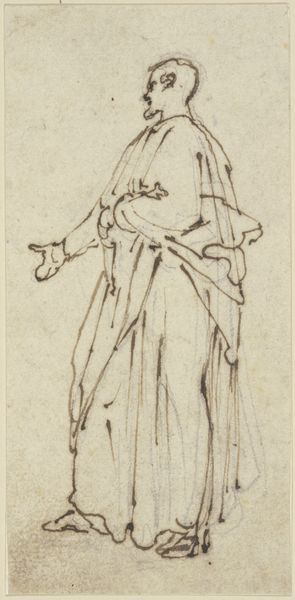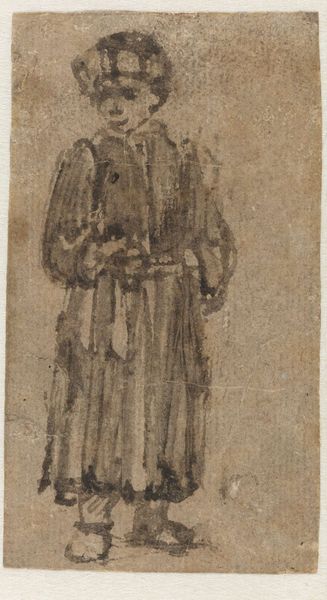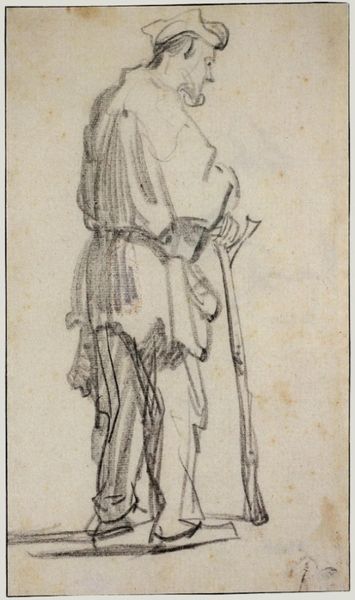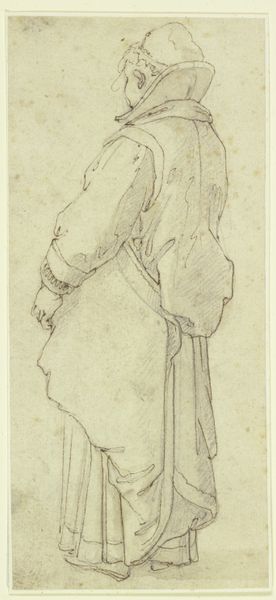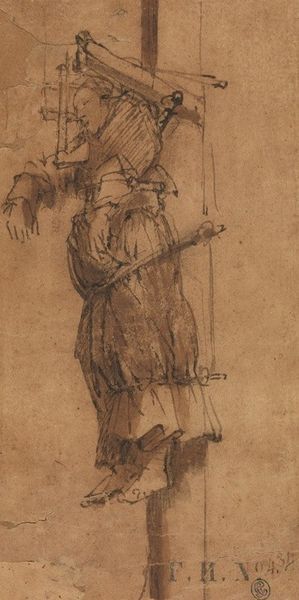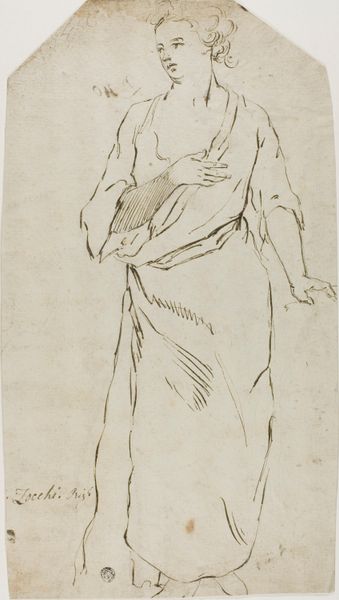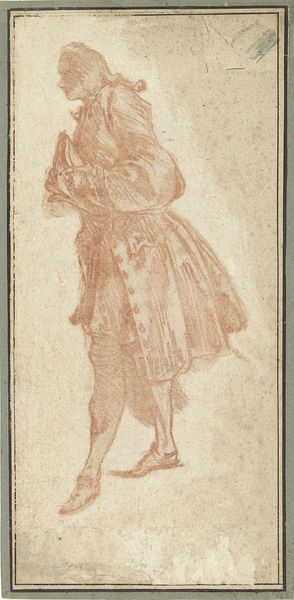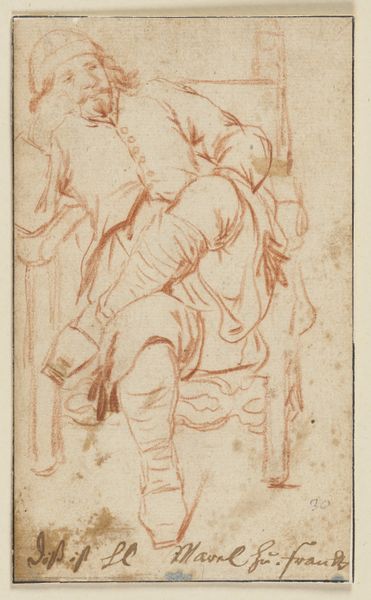
drawing, paper, ink
#
portrait
#
drawing
#
baroque
#
figuration
#
paper
#
ink
#
line
Dimensions: height 112 mm, width 54 mm
Copyright: Rijks Museum: Open Domain
Curator: This is Rembrandt van Rijn's "Standing Man with Outstretched Arm," made with pen and ink on paper around 1636 to 1641. It's currently housed in the Rijksmuseum. What's your first take? Editor: There's a raw energy in this sketch, almost impatient. I'm struck by the dynamic pose; it's less about observation and more about conveying motion. There is something vulnerable in its roughness. Curator: It's Baroque energy, definitely. I think Rembrandt was always reaching, even in studies. We often see him as the master of light and shadow but in these studies, we feel him thinking through space and form with such urgency. It makes the painting so interesting. Editor: The "thinking through space," that's insightful. He's not just depicting a man, he's deconstructing the very act of representation. Who is this man? A soldier, perhaps? It feels symbolic—the arm outstretched, almost an invitation or perhaps even a plea. Is he looking for a way out? Curator: It feels more like a man searching for purpose. Remember the political landscape of 17th-century Netherlands? There were shifts in power, new merchant classes. A commoner's ascent was a real question mark. Perhaps Rembrandt is channeling that very ambiguity and uncertainty of what action to take in moments of massive historical transition. Editor: Absolutely, the societal shifts were definitely in the air. I appreciate your connecting it to a specific social context; this artwork reflects tension between the individual and a world constantly redefining itself. But the medium seems also important here: The thin, stark ink against the muted paper creates this striking vulnerability, where we see him searching within this moment. Curator: Precisely, it feels very intimate despite its incompleteness. Thank you. This was very enlightening! Editor: Indeed. Rembrandt has given us much to ponder in so few strokes.
Comments
rijksmuseum about 2 years ago
⋮
These drawings were made about twenty years apart. They were probably part of larger studies with numerous figures. Such sheets were often cut into pieces by dealers to increase their profits. The figure at the left is too tightly cropped. It is now unclear whether he is a beggar asking for alms, or perhaps a figure in a historical scene.
Join the conversation
Join millions of artists and users on Artera today and experience the ultimate creative platform.
